Key Takeaways
1. Problem Solving is More Than Just Knowing Syntax
In essence, most programming books for beginners teach how to read a program, not how to write one.
Syntax vs. Problem Solving. Many aspiring programmers struggle because they focus solely on learning the syntax of a programming language, mistaking it for the ability to write original programs. Understanding syntax is essential, but it's merely the first step. The real challenge lies in problem-solving: the ability to translate a problem description into a working program.
Creative vs. Analytical Skills. Problem-solving requires a different set of mental muscles than learning syntax. Syntax acquisition is primarily an analytical, "left-brain" activity, involving memorization and comprehension. Writing original code, on the other hand, is a creative, "right-brain" activity, demanding ingenuity and the ability to combine learned tools in novel ways.
Beyond Cookbooks. Relying solely on "cookbook" examples or pre-written recipes can hinder the development of true problem-solving skills. While such resources can be valuable time-savers, they don't foster the deep understanding of ingredients, preparation methods, and cooking techniques that allows a great cook to create original meals. Similarly, a great programmer understands language syntax, application frameworks, algorithms, and software engineering principles, enabling them to craft original programs from specifications.
2. Formal Restatement Unlocks Hidden Solutions
Restating the problem in a more formal manner is a great technique for gaining insight into a problem.
Gaining New Perspectives. Restating a problem in different terms or from a different angle can reveal solutions that were previously hidden. It's like examining a hill from all sides before attempting to climb it, searching for the easiest path to the summit. This technique can clarify the true goal, which may not be what it initially seemed.
Constraints and Operations. Formal restatement involves identifying the constraints (unbreakable rules) and operations (possible actions) within the problem. By explicitly listing these elements, you can uncover potential solutions that might have been overlooked. For example, in the classic "fox, goose, and corn" riddle, formally stating the constraints and operations reveals the possibility of taking an item back across the river, a move that many initially fail to consider.
Thinking vs. Solving. Thinking about the problem itself can be as productive, or even more productive, than thinking about the solution. By formally restating the problem, you force yourself to analyze its components and relationships, often leading to valuable insights and a clearer path to a solution.
3. Divide and Conquer: Break Down Complexity
Finding a way to divide a problem into steps or phases can make the problem much easier.
Reducing Difficulty. Dividing a problem into smaller, more manageable pieces can significantly reduce its overall difficulty. The effort required to solve each piece is often far less than the effort required to solve the entire problem at once. This is because combining programming techniques is much trickier than using techniques alone.
Sorting Analogy. Consider alphabetizing 100 files. Alphabetizing four groups of 25 files individually is far less work than alphabetizing the entire set of 100 at once. This is because the work involved in inserting a single file grows as the number of files already filed grows.
Sequential vs. Combined Techniques. Code that employs a series of if statements inside a while loop that is itself inside a for loop will be more difficult to write and read than a section of code that employs all those same control statements sequentially. By dividing the problem, you can simplify the code and reduce the cognitive load.
4. Analogies Bridge the Gap Between Problems
Expert problem solvers are quick to recognize an analogy, an exploitable similarity between a solved problem and an unsolved problem.
Exploiting Similarities. Recognizing analogies, or similarities between a current problem and a previously solved one, is a powerful problem-solving technique. The similarity may involve only a part of the problems, but it can provide valuable insights and shortcuts.
Quarrasi Lock Example. The Quarrasi lock problem, disguised with extraneous details and alien technology, is essentially the same as the "fox, goose, and corn" riddle. Recognizing this analogy allows you to translate the solution from the first problem rather than creating a new one.
Building a Solution Library. The more problems you solve and fully understand, the larger your storehouse of potential analogies becomes. This is why it's crucial to avoid shortcuts like copying code you don't fully understand. Every successful program you write is more than a solution to a current problem; it's a potential source of analogies to solve future problems.
5. Planning Prevents Frustration and Guides Progress
You must always have a plan, rather than engaging in directionless activity.
Eisenhower's Wisdom. "I have always found that plans are useless, but planning is indispensable." While the specifics of a plan may change as you encounter unforeseen challenges, the act of planning itself is crucial for success.
Setting Intermediate Goals. Without a plan, you have only one goal: solve the whole problem. This can lead to frustration, as there is no positive reinforcement from your efforts until the end. A plan allows you to set intermediate goals, track your progress, and build confidence.
Fleming's Discovery. The discovery of penicillin wasn't a lucky accident; it was the result of thorough and controlled experimentation. Planning allows you to recognize the importance of unexpected events and turn them into valuable insights.
6. Arrays: Fundamental Tools for Data Organization
The topics covered in this book represent areas in which I have most often seen new programmers struggle.
Collections of Variables. Arrays are fundamental data structures that organize variables of the same type under a single name, accessed by a numerical index. This organization enables efficient storage and retrieval of related data.
Basic Operations. Key array operations include storing values, copying arrays (or portions thereof), retrieving values by index, searching for specific values, sorting elements into a desired order, and computing statistics based on the array's contents.
Beyond Simple Data. Arrays can store complex data types, such as structures or objects, allowing you to organize and manipulate collections of related information. This versatility makes arrays a powerful tool for solving a wide range of programming problems.
7. Pointers: Mastering Dynamic Memory Management
C++ is the real deal — it’s programming without training wheels.
Dynamic Allocation. Pointers enable dynamic memory allocation, allowing you to create data structures with sizes determined at runtime. This flexibility is crucial when dealing with data sets of unknown or variable size.
Memory Sharing. Pointers facilitate memory sharing, allowing different parts of a program to access the same data without the overhead of copying. This can significantly improve performance, especially when working with large data structures.
Responsibility. Mastering pointers requires careful attention to memory management. You must allocate memory when needed, track pointers to allocated memory, and deallocate memory when it's no longer in use to avoid memory leaks and other errors.
8. Classes: Encapsulation for Reusability and Clarity
By studying these approaches, you can unlock your creativity.
Combining Data and Code. Classes encapsulate data and code that operates on that data into a single, reusable unit. This promotes modularity, organization, and code reuse.
Information Hiding. Classes enforce information hiding by controlling access to data members, preventing direct manipulation from outside the class. This protects the integrity of the data and allows you to change the implementation without affecting client code.
Extending the Language. Classes extend the language by creating new data types with custom behaviors. This allows you to model real-world objects and concepts in your code, making it more readable and maintainable.
9. Recursion: Elegant Solutions for Complex Structures
This book isn’t going to tell you precisely what to do; it’s going to help you develop your latent problem-solving abilities so that you will know what you should do.
Self-Referential Functions. Recursion is a technique where a function calls itself, either directly or indirectly. This allows you to solve complex problems by breaking them down into smaller, self-similar subproblems.
Base Cases and Recursive Steps. A recursive function must have a base case, which is a condition that stops the recursion and returns a value directly. It must also have a recursive step, which calls the function itself with a modified input.
Head vs. Tail Recursion. Head recursion performs the recursive call before other processing, while tail recursion performs the recursive call after other processing. The choice between the two can affect the efficiency and readability of the code.
10. Code Reuse: Balancing Efficiency and Understanding
The chief lesson here is the importance of recognizing analogies.
Avoiding Reinventing the Wheel. Code reuse is essential for efficient software development. Instead of writing everything from scratch, you can leverage existing components, such as algorithms, patterns, abstract data types, and libraries.
Good vs. Bad Reuse. Good reuse involves understanding the underlying concepts and adapting them to your specific problem. Bad reuse involves blindly copying code without understanding it, which can lead to errors and maintenance difficulties.
Building a Component Library. Strive to build a personal library of well-understood components that you can reuse in future projects. This will significantly increase your productivity and improve the quality of your code.
11. Master Your Strengths, Mitigate Your Weaknesses
My goal is for you and every other reader of this book to learn to systematically approach every programming task and to have the confidence that you will ultimately solve a given problem.
Self-Awareness is Key. The most effective problem-solving approach is one that leverages your strengths and compensates for your weaknesses. This requires honest self-appraisal and a willingness to adapt your techniques accordingly.
Coding and Design Weaknesses. Identify your common coding errors and design flaws. This will allow you to develop strategies to avoid these pitfalls and improve the overall quality of your code.
Leverage Your Talents. Recognize your programming strengths and design your master plan to maximize their impact. This will not only lead to better results but also make the problem-solving process more enjoyable and rewarding.
Last updated:
FAQ
What is Think Like a Programmer by V. Anton Spraul about?
- Problem-solving focus: The book centers on teaching creative and systematic problem-solving skills for programmers, rather than just coding syntax or language features.
- C++ as a teaching tool: While C++ is used for examples, the problem-solving strategies and concepts are applicable to any programming language.
- Comprehensive coverage: It spans fundamental programming constructs (arrays, pointers, classes) to advanced topics like recursion, dynamic memory, and design patterns.
- Goal of transformation: The ultimate aim is to help readers become confident, independent problem solvers who can write original programs from scratch.
Why should I read Think Like a Programmer by V. Anton Spraul?
- Develop a problem-solving mindset: The book addresses the often-missing skill of solving new programming problems, not just reading or modifying existing code.
- Structured learning approach: It provides systematic techniques and strategies to organize thoughts, break down problems, and build confidence.
- Long-term skill building: Readers learn to design robust programs, avoid common pitfalls, and think critically about code reuse and design decisions.
- Practical exercises: The book includes hands-on exercises to help internalize concepts and build real-world programming confidence.
What are the key takeaways from Think Like a Programmer by V. Anton Spraul?
- Always have a plan: Planning before coding is emphasized to avoid frustration and directionless activity.
- Restate and divide problems: Breaking problems into smaller, manageable parts and restating them can reveal easier solutions.
- Look for analogies: Recognizing similarities with previously solved problems accelerates finding solutions.
- Confidence through practice: Systematic practice and tackling exercises help build the confidence needed to solve novel programming challenges.
How does Think Like a Programmer by V. Anton Spraul define and teach creative problem solving in programming?
- Creative and systematic approach: Programming is presented as a creative activity, and the book offers systematic methods to unlock that creativity.
- Classic puzzles as teaching tools: Puzzles like the Fox, Goose, and Corn, sliding tiles, and Sudoku are used to illustrate problem-solving strategies.
- Emphasis on experimentation: Readers are encouraged to experiment, use what they know, and learn from controlled trials.
- Managing frustration: The book highlights the importance of managing frustration to maintain clear thinking and effective problem solving.
What are the most important problem-solving strategies in Think Like a Programmer by V. Anton Spraul?
- Always have a plan: Even if the plan changes, having one prevents aimless work and helps set intermediate goals.
- Restate and divide: Restating clarifies understanding, and dividing problems often reduces complexity exponentially.
- Start with what you know: Use existing skills and try small experiments to gain insight, especially with unfamiliar APIs or behaviors.
- Look for analogies: Drawing parallels to previously solved problems can lead to faster and more effective solutions.
How does Think Like a Programmer by V. Anton Spraul use C++ to teach problem solving?
- Assumes basic C++ knowledge: The book expects readers to know basic C++ syntax and semantics, focusing instead on problem-solving skills.
- Readable code examples: Code is written for clarity and understanding, often breaking down complex steps.
- Not a cookbook: The emphasis is on developing adaptable problem-solving skills, not memorizing recipes or algorithms.
- Active learning: Readers are encouraged to solve exercises themselves to internalize the concepts.
How does Think Like a Programmer by V. Anton Spraul explain arrays and their use in problem solving?
- Array fundamentals: Covers storing, copying, retrieving, searching, and sorting data using arrays.
- Problem-solving techniques: Demonstrates strategies like sorting before searching for the mode and using histograms for frequency counting.
- When to use arrays: Discusses scenarios where arrays are appropriate, such as when size is known or random access is needed.
- Alternatives to arrays: Introduces vectors and lists for cases where data size is unknown or sequential access is preferred.
What does Think Like a Programmer by V. Anton Spraul teach about pointers and dynamic memory management?
- Pointer basics: Reviews pointer declaration, dereferencing, dynamic memory allocation (new/delete), and assignment.
- Benefits of pointers: Explains how pointers enable runtime-sized and resizable data structures, and efficient memory sharing.
- Memory management pitfalls: Discusses stack vs. heap memory, fragmentation, memory leaks, and dangling pointers.
- Problem-solving with pointers: Provides examples like dynamic arrays for variable-length strings and linked lists for collections.
How does Think Like a Programmer by V. Anton Spraul introduce classes and object-oriented programming?
- Class fundamentals: Reviews class declarations, member variables, access specifiers, and constructors.
- Encapsulation and information hiding: Stresses making data private and exposing only necessary methods for robust design.
- Design for readability: Encourages clear naming and structuring for code that is easy to understand and maintain.
- Practical examples: Builds a studentRecord class from a struct, adding validation and constructors to illustrate OOP principles.
What practical advice does Think Like a Programmer by V. Anton Spraul give for designing and using classes?
- Encapsulation: Keep data private and provide only necessary access methods to protect implementation details.
- Divide and conquer: Use classes to break complex problems into manageable, reusable units.
- Readability and expressiveness: Choose method names and class structures that make code intuitive for users and maintainers.
- Testing and validation: Always consider edge cases and validate inputs within class methods for robustness.
How does Think Like a Programmer by V. Anton Spraul explain recursion and recursive thinking?
- Big Recursive Idea (BRI): Teaches that recursive calls can be thought of as calls to another function, simplifying the design of recursive solutions.
- Head vs. tail recursion: Explains the difference and uses real-world analogies to clarify when to use each.
- Common mistakes: Warns against too many parameters and the use of global variables in recursion.
- Natural fit for data structures: Shows how recursion is well-suited for dynamic structures like linked lists and binary trees.
What are the most common pitfalls and mistakes highlighted in Think Like a Programmer by V. Anton Spraul?
- Fake classes: Warns against creating classes that simply encapsulate global variables or force OOP where it doesn’t fit.
- Redundant data: Stresses that storing data that can be derived from other data leads to inconsistencies and bugs.
- Shallow copies and memory leaks: Explains the dangers of shallow copying objects with dynamic memory and the importance of deep copy implementations.
- Overcomplicating recursion: Advises against unnecessary parameters and global variables in recursive functions, which can make code harder to understand and maintain.
What are the best quotes from Think Like a Programmer by V. Anton Spraul and what do they mean?
- “Are you thinking like a programmer yet?” — Captures the book’s goal of transforming readers into creative, effective problem solvers.
- “Always have a plan.” — Emphasizes the necessity of planning before coding to avoid frustration and produce robust solutions.
- “Redundant data is trouble waiting to happen.” — Warns against storing unnecessary data, which can cause inconsistencies and bugs.
- “If you follow certain conventions in your coding, you can pretend that no recursion is taking place.” — Encourages simplifying recursive thinking by treating recursive calls as if they were calls to other functions.
- “Fake classes mean that the program has all of the same defects as one that uses global variables.” — Highlights the importance of proper class design to realize the benefits of object-oriented programming.
Review Summary
Think Like a Programmer receives mixed reviews, with an average rating of 3.86 out of 5. Readers appreciate its problem-solving approach and exercises, finding it useful for developing programming skills. Some praise the author's explanations and consider it a valuable resource for beginners. However, critics argue that the book's reliance on C++ limits its accessibility, and some find the content too basic or academic. The book's focus on logical thinking and breaking down problems is generally well-received, though opinions vary on its effectiveness for experienced programmers.
Similar Books

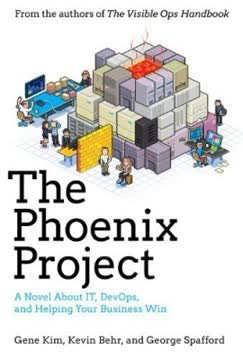



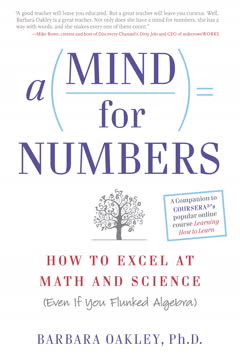

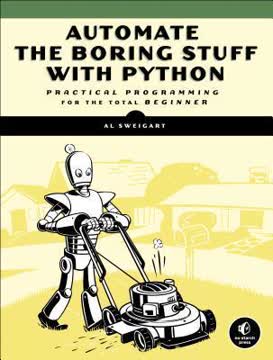
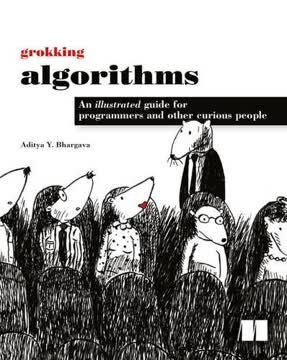
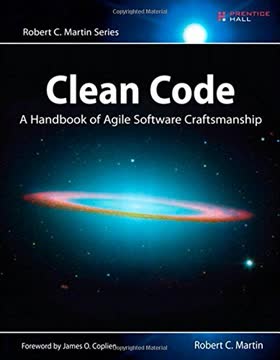
Download PDF
Download EPUB
.epub digital book format is ideal for reading ebooks on phones, tablets, and e-readers.




